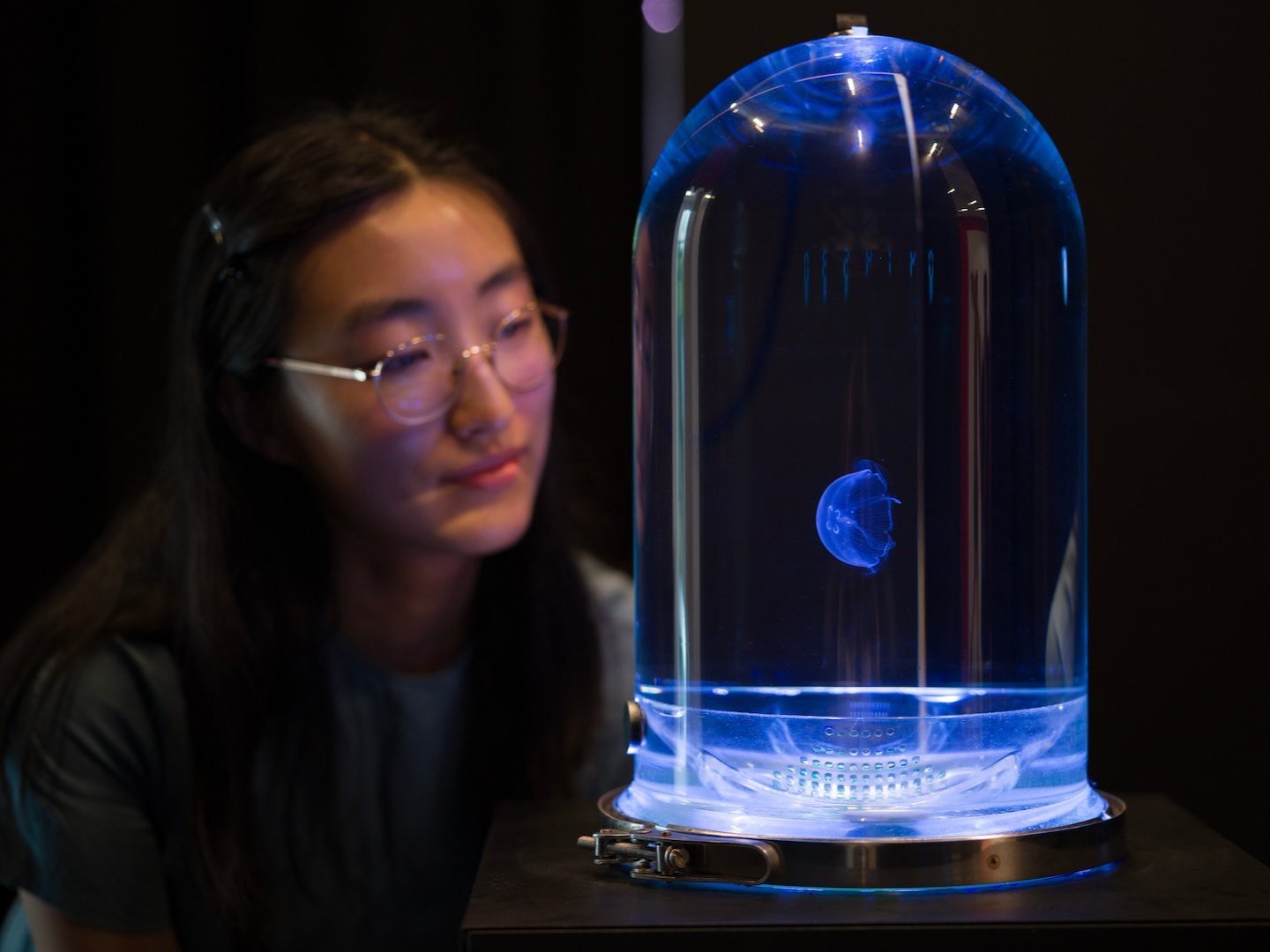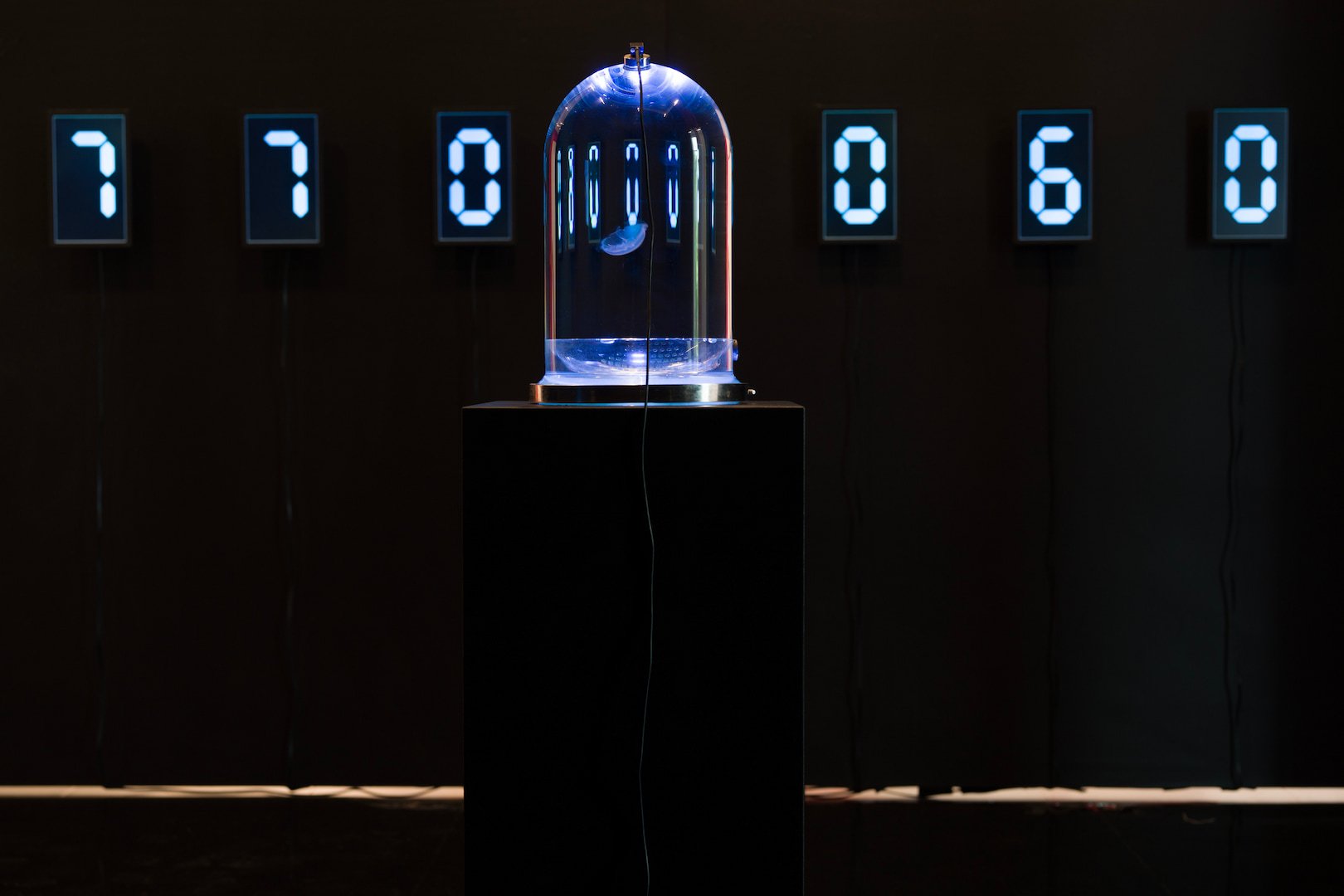AGUAVIVA
Thomas Marcusson
Is nature more random than a computer?
This artwork extracts randomness from a closed aquatic system featuring turbulent flowing water and a silicone jellyfish. A camera tracks its movement and translates it into random numbers on screens.
True randomness is valuable when it comes to things like encrypting data. Computers are bad at coming up with random numbers because they’re designed to be predictable. That’s why alternative sources of randomness are often used to initiate high-end encryption schemes, which for example, can protect sensitive data online.
The internal movement of the artwork is informed by countless factors that create a system chaotic enough to outperform even a computer.
Access the numbers in real-time at the artist’s website.
Thomas Marcusson (Australia/Sweden) is an artist combining new technologies with more traditional mediums, such as sculpture and installation, to explore themes around science and society. He looks at the nexus between scientific theory and cultural phenomena to allow for new ways to think about and observe each.
Photography: Matthew Stanton


